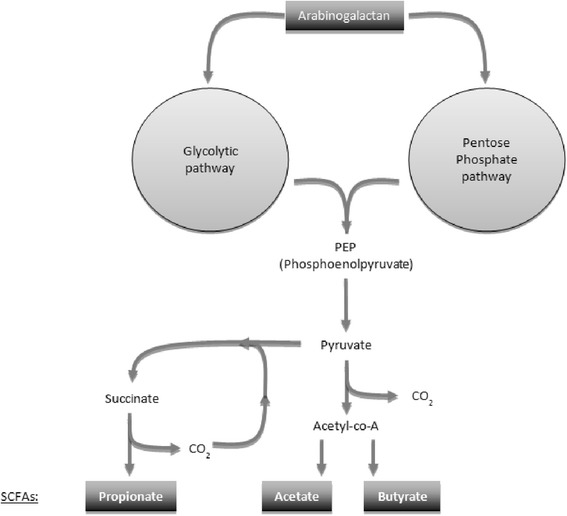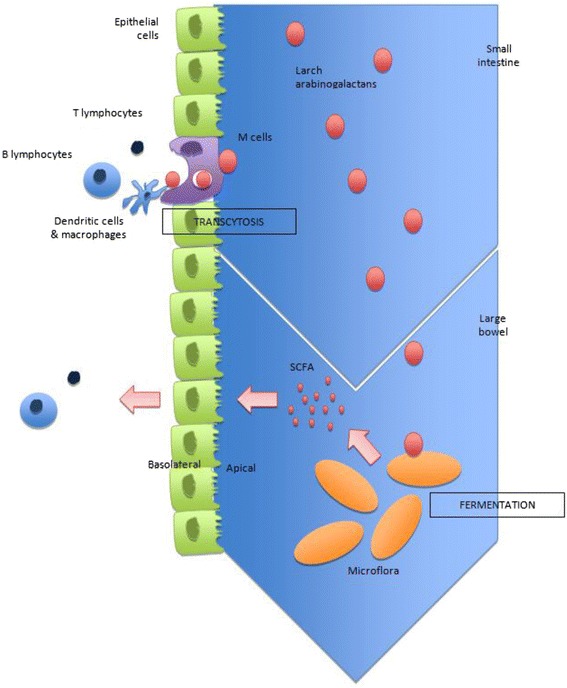Dion Carine, et al.
Nutrition & metabolism, 2016
Abstract
The common cold is a viral infection with important economic burdens in Western countries. The research and development of nutritional solutions to reduce the incidence and severity of colds today is a major focus of interest, and larch arabinogalactan seems to be a promising supportive agent. Arabinogalactan has been consumed by humans for thousands of years and is found in a variety of common vegetables as well as in medicinal herbs. The major commercial sources of this long, densely branched, high-molecular-weight polysaccharide are North American larch trees. The aim of this article is to review the immunomodulatory effects of larch arabinogalactan derived from Larix laricina and Larix occidentalis (North American Larix species) and more specifically its role in the resistance to common cold infections. In cell and animal models, larch arabinogalactan is capable of enhancing natural killer cells and macrophages as well as the secretion of pro-inflammatory cytokines. In humans a clinical study demonstrated that larch arabinogalactan increased the body's potential to defend against common cold infection. Larch arabinogalactan decreased the incidence of cold episodes by 23 %. Improvements of serum antigen-specific IgG and IgE response to Streptococcus pneumoniae and tetanus vaccination suggesting a B cell dependent mechanism have been reported in vaccination studies with larch arabinogalactan, while the absence of response following influenza vaccination suggests the involvement of a T cell dependent mechanism. These observations suggest a role for larch arabinogalactan in the improvement of cold infections, although the mode of action remains to be further explored. Different hypotheses can be envisaged as larch arabinogalactan can possibly act indirectly through microbiota-dependent mechanisms and/or have a direct effect on the immune system via the gut-associated lymphoid tissue (GALT).
Keywords
Common cold infections; Dietary fibers; Immune system; Larch arabinogalactan; Larix; Polysaccharides; ResistAid®; SCFA; Vaccine.
Figures

Proposed mechanisms of action of larch arabinogalactan on immune system.

Larch arabinogalactan metabolism: simplified diagram of polysaccharide breakdown and the main routes of carbohydrate fermentation in the large intestine.
| PMID: | 27073407 |
|---|---|
| DOI: | 10.1186/s12986-016-0086-x |
| PMCID (Free PMC Article): | PMC4828828 |
| Category: | Immune |
The best supplements with Galactoarabinan in Immune category:
- Immunity 911 - Extra Powerful Ingredients for Your Stronger Immunity -
Immunity 911 - Advanced Immune Boster Formula Your First Line Of Defense Against Infection!
Viruses are floating all around us, ready to filter into our body any moment completely unnoticed. It contains among others: Galactoarabinan. - Beta-Glucans, with ImmunEnhancer, Extra Strength, 250 mg, 60 Veg Capsules (Now Foods) - Beta-1,3/1,6 D-Glucan (Beta-Glucans) is a bioactive carbohydrate derived from the cell wall of Saccharomyces cerevisiae, commonly known as Bakers' yeast. It contains among others: Galactoarabinan.
Articles similar to "Does Larch Arabinogalactan Enhance Immune Function? A Review of Mechanistic and Clinical Trials."
- The role of Galactoarabinan in Immune: The Effects of Oral Supplements With Sambucus Nigra, Zinc, Tyndallized Lactobacillus Acidophilus (HA122), Arabinogalactans, Vitamin D, Vitamin E and Vitamin C in Otitis Media With Effusion in Children: A Randomized Controlled Trial. (Objective: To evaluate the ability of oral supplements with immune-stimulating molecules (Sambucus nigra, Zinc, Tyndallized Lactobacillus acidophilus (HA122), Arabinogalactans, vitamin D, vitamin E and vitamin C) to reduce the inflammation of the upper airway tract and improve the outcome of otitis media with effusion (OME) in children... OS with immune-stimulating molecules should be considered as a supporting therapy in children affected by recurrent episodes of UAI associated with OME due to their capacity to improve the immune response and reduce the inflammatory phenomena. OS can improve the fibroendoscopic findings by restoring middle ear ventilation, in addition to their ability to reduce inflammation in the middle ear.)
Previous article
Olive Leaf Extracts Act as Modulators of the Human Immune Response.

























































